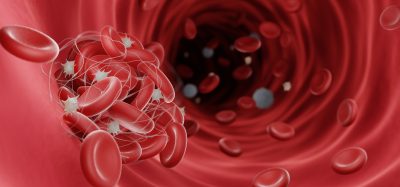New method of designing drugs without side effects
Posted: 8 June 2023 | Izzy Wood (Drug Target Review) | No comments yet
Japanese researchers now reveal a new way of activating GPCR by triggering shape changes in the intracellular region of the receptor. This new process can help researchers design drugs with fewer or no side effects.


Have you ever wondered how drugs reach their targets and achieve their function within our bodies?
If a drug molecule or a ligand is a message, an inbox is typically a receptor in the cell membrane. One such receptor involved in relaying molecular signals is a G protein-coupled receptor (GPCR).
A team of researchers headed by Osamu Nureki, Professor at the University of Tokyo, Japan, discovered a new receptor activation mode of a bone metabolism-related GPCR called human parathyroid hormone type 1 receptor (PTH1R) without signal transduction from the extracellular side.
About one-third of existing drugs work by controlling the activation of this protein. The forthcoming research, published in Nature, reveals a new way that GPCRs are activated to trigger shape changes in the intracellular region of the receptor. This new process can help researchers design drugs with fewer or no side effects.
When a message molecule binds to the extracellular side of the receptor, it triggers a shape change activating G proteins and the ß-arrestin protein attached to the intracellular side of the receptor. Like a molecular relay, the information passes downstream and affects various bodily processes.
Adverse side effects ensue if drugs acting on GPCRs activate multiple signalling pathways rather than a specific target pathway. That is why drug development focuses on activating specific molecular signal pathways within cells. Activating the GPCR from inside the cell rather than outside the cell could be one way to achieve specificity. But until now, there was no evidence of direct activation of only the intracellular side of GPCRs without the initiations from the extracellular side.
The researchers discovered a new receptor activation mode of a bone metabolism-related GPCR called human parathyroid hormone type 1 receptor (PTH1R) without signal transduction from the extracellular side.
“Understanding the molecular mechanism will enable us to design optimal drugs,” explained Kazuhiro Kobayashi, doctoral student and an author of the study. Such a drug offers “a promising treatment for osteoporosis.”
“Treatments for osteoporosis that target PTH1R require strict dosage, have administrative restrictions, and there are not yet any better alternatives,” he continued. This motivated the team to look for better drug design strategies targeting the parathyroid hormone receptor.
To understand function through structure, they used cryo-electron microscopy and revealed the 3D structure of the PTH1R and G protein bound to a message molecule. The team synthesised a non-peptide message molecule called PCO371, which binds to the intracellular region of the receptor and interacts directly with G protein subunits.
The PCO371-bound PTH1R structure can directly and stably modulate the intracellular side of PTH1R. And because PCO371 activates only G protein and not ß-arrestin it does not cause side effects. This specificity of its binding and receptor activation mode makes it a suitable candidate for potential small-molecule-based drugs for class B1 GPCRs, like PTH1R, which currently lack oral administrative drug ligands. Such drugs would have reduced adverse effects and burdens on patients as they act on specific molecular pathways.
The findings from this study will help “develop new drugs for disorders such as obesity, pain, osteoporosis, and neurological disorders,” concluded Kobayashi.
Related topics
Drug Delivery, Drug Development, Drug Targets, GPCRs, Therapeutics
Related conditions
Osteoporosis
Related organisations
University of Tokyo
Related people
Kazuhiro Kobayashi, Osamu Nureki








